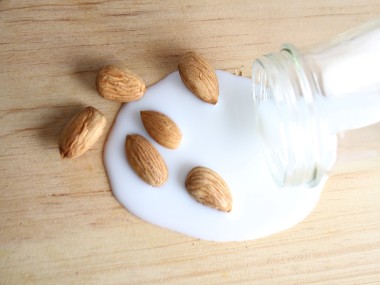You might have often picked up a carton almond milk or jar or almond butter, thinking that you’d be making the “healthier” and more “environment-friendly” choice by consuming this plant-based product instead of drinking regular milk. But here’s what should give you pause: increased almond production to meet the growing demands of almond byproducts is killing billions of bees every year. [caption id=“attachment_7889351” align=“alignleft” width=“380”]  Representational image. Image by jennyleenaguirre from Pixabay.[/caption] If you’re wondering how, then firstly, it’s important to understand that without bees, the world would have no almonds, berries or other agricultural products that depend on pollination. Commercially managed honeybees are used, particularly in the California Central Valley region of the US, to produce 80% of the world’s almond supply. In 2018-19, according to the United States Department of Agriculture (USDA), 50 billion bees died making sure that the 250% increase in almond milk demand (as described in the Nielson report of 2018) was met.
Bees for honey and almonds
Honey farming isn’t as lucrative as almond farming anymore, and so beekeepers - after harvesting the honey from the bees - rent out their hives to almond producers. Only the queen bee, nurse bees and the brood of young bees are left with the beekeepers, while the worker bees are shifted to the Central Valley to pollinate almond blossoms (which later mature and make almonds, from which milk, butter, etc is derived). While this sort of division of workers and colony might sound normal to humans, who have forever managed a family’s survival when the workers are away from home to earn food and money, the ecosystem of bees is quite different. This displacement of the workers and the isolation of the queen bee’s young population leads to the collapse of the entire colony because the colony cannot survive in the absence of the worker bees. This is called Colony Collapse Disorder (CCD). The USDA discovered back in 2006 that despite American agriculture depending heavily on cross-pollination by commercial bees (it adds $15 billion to the US economy every year), the bees themselves are dying out in large numbers. The primary cause behind this was CCD. In 2006-07 itself, beekeepers reported the loss of 30-90% of their hives due to CCD. The USDA has since taken measures to reduce these numbers and has even met with limited success. But recently, a deeper and more serious cause behind the wiping out of entire bee colonies has been discovered, and it’s once again linked to almond production.
Exposure to parasites and pesticides
The farmers who run the almond orchards of Central Valley depend on rented worker bees for pollination of their crops, but they also have to deal with a variety of parasites and fungi that can contaminate their almond crops. According to a report published in PLOS One in 2018, Aspergillus flavus and Aspergillus parasiticus are two such parasites that release toxins called aflatoxins, which are known to plague crops of almonds, figs and pistachios in California. Aflatoxins have a huge effect on human and animal health, and consuming aflatoxin-contaminated crops can even lead to death. Are bees immune to these parasites? Of course not. The PLOS One study describes how A. flavus contamination causes stonebrood (mummification of all the young bees) and aspergillosis (an infection which affects the respiratory system) in bee larvae as well as adults. And what’s done to deal with these parasites plaguing almond crops and bees? Pesticides are used to kill them. A recent article in the Guardian said that 35 billion lbs (approximately 15.8 crore kilograms) of pesticides are sprayed on almond crops in a year. The most popular of these pesticides, herbicide glyphosate or Roundup, is known to be lethal to both bees and humans. A study published by the US National Academy of Sciences in 2018 revealed that herbicide glyphosate directly affected the healthy gut bacteria of bees, and made them more susceptible to infections by pathogens - and these infections can, in turn, reduce their mortality and wipe out colonies. So, the parasites that plague almond crops are harmful to bees, and so are the pesticides that can kill those parasites. You have to admit, this is not a win-win situation for bees in any way. The world, especially the health-conscious, lactose-intolerant and vegan populations, are increasingly becoming dependent on almond byproducts. On the other hand, producing that amount of almonds is killing billions of bees every year. If you’re an almond milk user in need of an alternative, you may want to consider switching to other plant-based options like soy milk, cashew milk, coconut milk, hemp milk and oat milk. For more on this topic, please read our article on Almonds: Benefits, Uses and Side Effects_._ Health articles in Firstpost are written by myUpchar.com, India’s first and biggest resource for verified medical information. At myUpchar, researchers and journalists work with doctors to bring you information on all things health.


)

)
)
)
)
)
)
)
)



